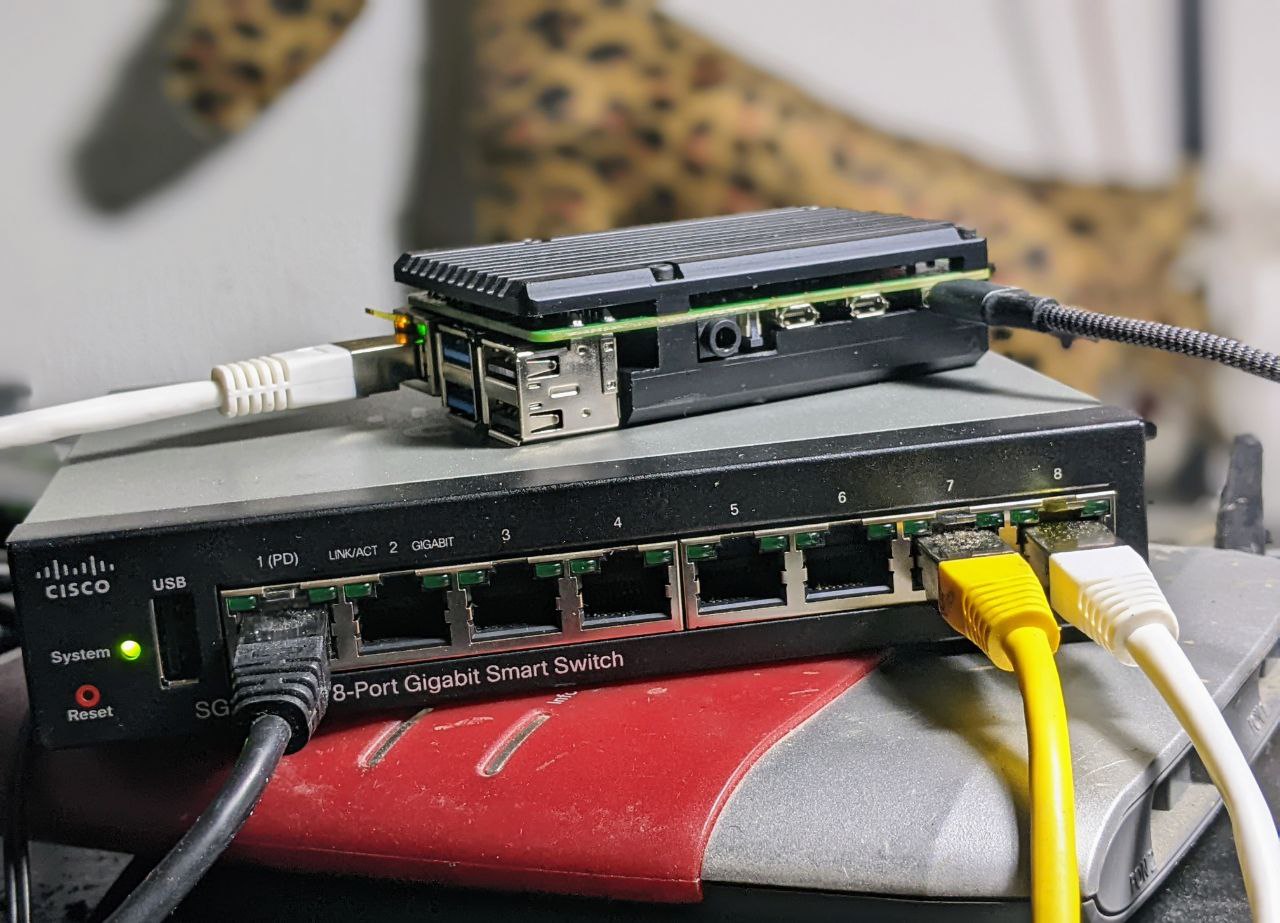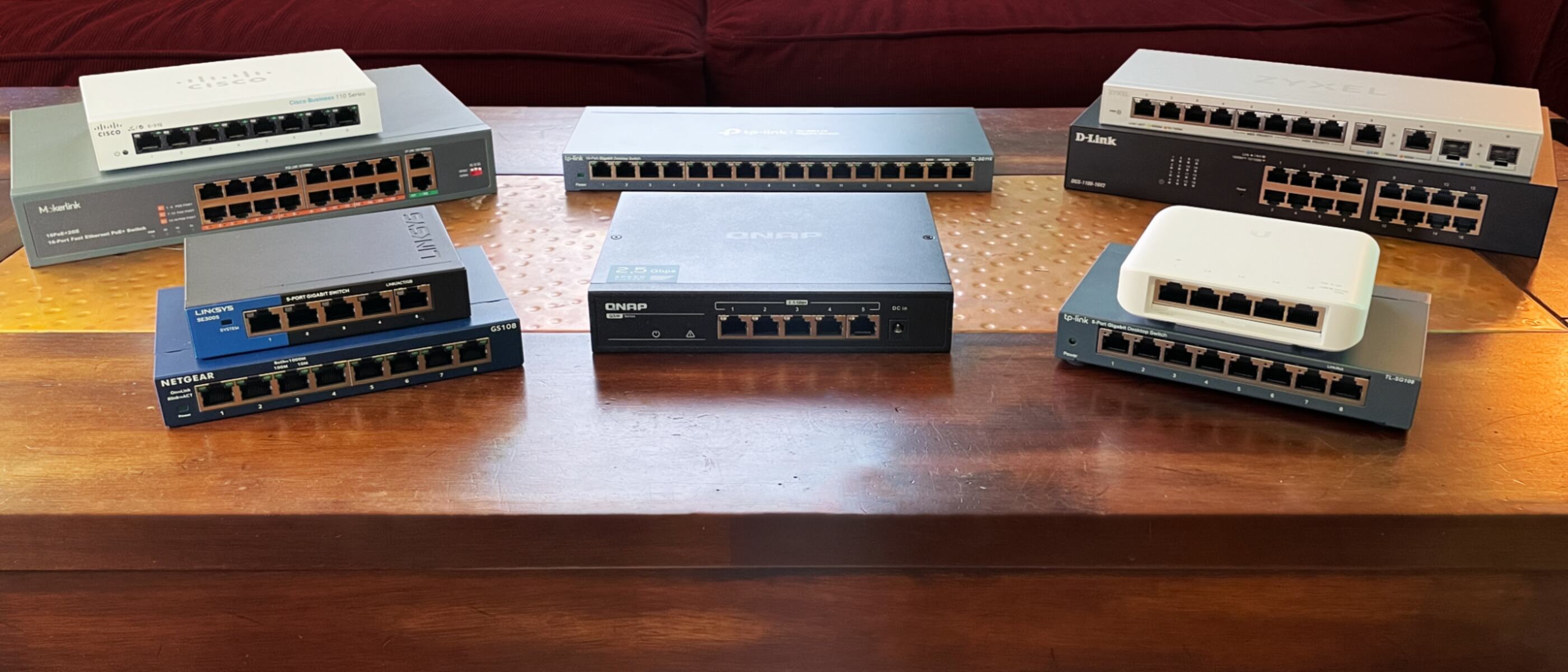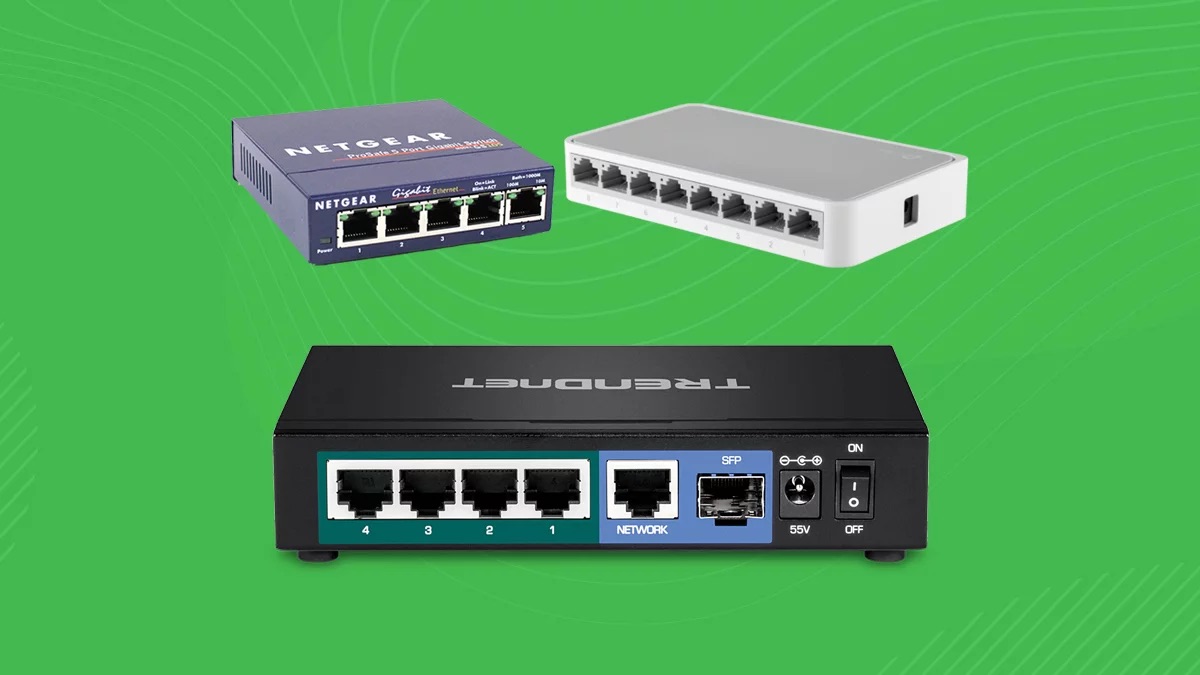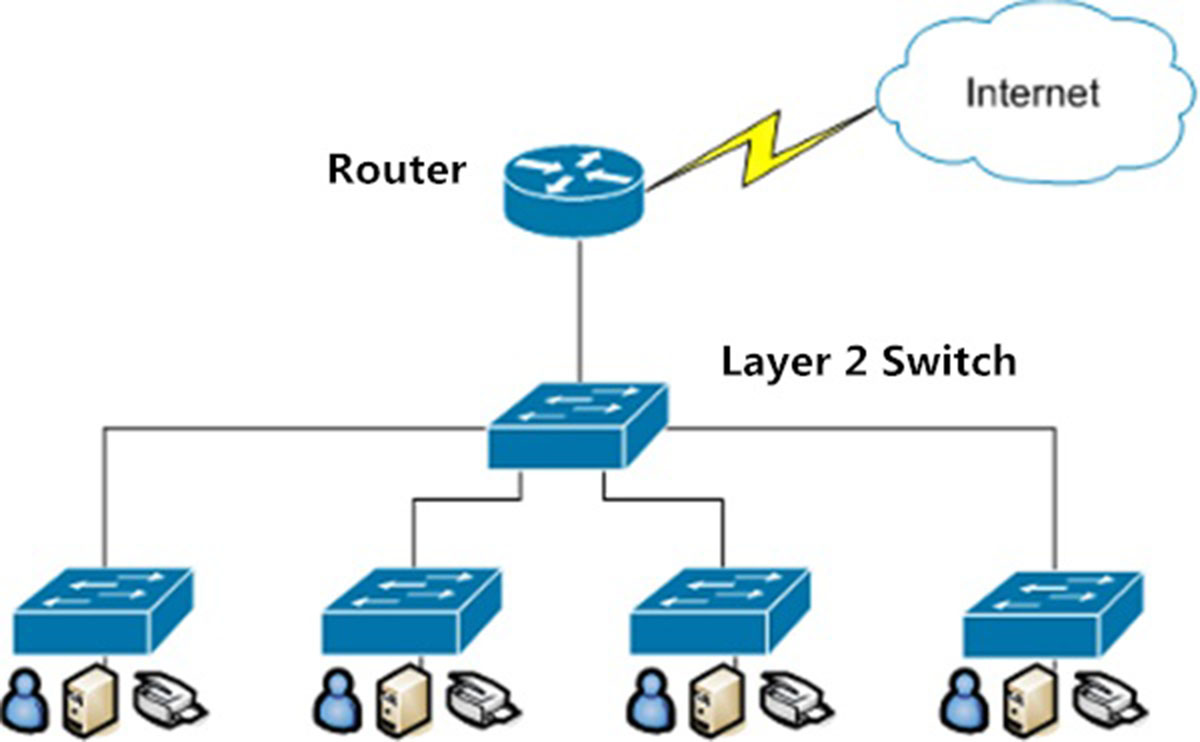Introduction
Setting up VLANs on a managed network switch is a crucial aspect of network management, allowing for improved security, better traffic management, and enhanced network performance. In this article, we will explore the process of configuring VLANs on a managed network switch, providing a comprehensive guide for network administrators and IT professionals.
VLANs, or Virtual Local Area Networks, are a fundamental component of modern network infrastructure, enabling the segmentation of a single physical network into multiple isolated networks. This segmentation offers numerous benefits, including enhanced security, improved bandwidth utilization, and simplified network management.
By implementing VLANs, organizations can logically separate different departments, user groups, or types of network traffic, thereby enhancing network security and reducing the risk of unauthorized access to sensitive data. Additionally, VLANs facilitate more efficient use of network resources by allowing network administrators to prioritize traffic and allocate bandwidth based on specific requirements.
In the following sections, we will delve into the specifics of setting up VLANs on a managed network switch, outlining the step-by-step process for creating and configuring VLANs to optimize network performance and security. By following these guidelines, network administrators can effectively leverage VLAN technology to streamline network management and bolster the overall efficiency of their network infrastructure.
What is a VLAN?
A VLAN, or Virtual Local Area Network, is a logical network that allows devices to communicate as if they were connected to the same physical network, even if they are located on different network segments. This virtualization is achieved by configuring network switches to segment traffic based on specific criteria, such as port, protocol, or MAC address, effectively creating multiple isolated networks within a single physical network infrastructure.
By implementing VLANs, organizations can achieve enhanced network security, improved traffic management, and greater flexibility in network design. VLANs enable network administrators to logically group devices and users, irrespective of their physical location, facilitating more efficient network management and administration.
One of the primary advantages of VLANs is the ability to segregate network traffic, thereby enhancing security and isolating sensitive data from unauthorized access. By separating different user groups or departments into distinct VLANs, organizations can mitigate the risk of unauthorized access to confidential information, reducing the potential impact of security breaches.
Furthermore, VLANs contribute to improved network performance by allowing network administrators to prioritize traffic and allocate bandwidth based on specific requirements. This capability enables the optimization of network resources, ensuring that critical applications and services receive the necessary bandwidth while preventing congestion and bottlenecks in the network infrastructure.
Overall, VLANs play a vital role in modern network design and management, offering a flexible and efficient means of organizing and securing network traffic. By understanding the fundamental concept of VLANs and their benefits, network administrators can leverage this technology to optimize network performance, enhance security, and streamline network administration.
Benefits of Using VLANs
Implementing VLANs in a network infrastructure offers a myriad of benefits that contribute to improved security, efficient traffic management, and streamlined network administration. Understanding these advantages is essential for network administrators and IT professionals seeking to optimize their network design and performance.
- Enhanced Security: VLANs provide a robust mechanism for segregating network traffic, enabling organizations to isolate sensitive data and critical network resources from unauthorized access. By logically separating different user groups or departments into distinct VLANs, organizations can mitigate security risks and prevent unauthorized intrusion into confidential information.
- Improved Traffic Management: VLANs allow network administrators to prioritize traffic and allocate bandwidth based on specific requirements. This capability facilitates efficient traffic management, ensuring that critical applications and services receive the necessary network resources while preventing congestion and bottlenecks in the network infrastructure.
- Flexibility and Scalability: VLANs offer flexibility in network design, allowing organizations to adapt their network infrastructure to changing requirements and growth. As new devices or departments are added to the network, VLANs provide a scalable solution for segmenting and organizing network traffic without the need for extensive physical reconfiguration.
- Isolation of Broadcast Traffic: VLANs effectively isolate broadcast traffic within each virtual network, preventing unnecessary broadcast packets from consuming bandwidth across the entire network. This isolation reduces network congestion and minimizes the impact of broadcast storms, enhancing overall network performance.
- Simplified Network Management: By logically grouping devices and users into VLANs, network administrators can streamline network management and administration. VLANs facilitate the implementation of network policies, access controls, and maintenance procedures, contributing to more efficient network operations.
These benefits underscore the significance of VLANs in modern network environments, empowering organizations to optimize network security, performance, and management. By leveraging the advantages of VLAN technology, network administrators can create a more resilient and adaptable network infrastructure that aligns with the evolving needs of their organization.
Setting up VLAN on a Managed Network Switch
Configuring VLANs on a managed network switch involves a series of steps that enable network administrators to create and manage virtual networks within the existing physical infrastructure. By following these steps, organizations can effectively segment network traffic, enhance security, and optimize network performance.
Managed network switches provide a web-based interface that allows administrators to configure VLANs and manage network settings. The following steps outline the process of setting up VLANs on a managed network switch:
- Step 1: Access the Switch’s Web Interface
Begin by accessing the web interface of the managed network switch using a web browser. Enter the switch’s IP address in the browser’s address bar and log in with administrative credentials to access the switch’s configuration settings. - Step 2: Navigate to the VLAN Configuration Page
Once logged into the switch’s web interface, navigate to the VLAN configuration page. This section of the interface allows administrators to create, modify, and manage VLANs on the switch. - Step 3: Create VLANs
Within the VLAN configuration page, create the desired VLANs by assigning a VLAN ID and a name to each virtual network. This step involves defining the specific VLANs that will be used to segment network traffic based on organizational requirements. - Step 4: Assign Ports to VLANs
After creating VLANs, assign the switch ports to the respective VLANs. This process involves specifying which ports will be associated with each VLAN, effectively segmenting network traffic and isolating devices within the designated virtual networks. - Step 5: Configure VLAN Trunking
If interconnecting multiple switches or network devices, configure VLAN trunking to enable the transmission of multiple VLANs across a single network link. This facilitates the seamless communication of VLAN traffic between interconnected network devices.
By following these steps, network administrators can establish and configure VLANs on a managed network switch, effectively segmenting network traffic and optimizing network performance. The implementation of VLANs empowers organizations to enhance network security, improve traffic management, and streamline network administration, ultimately contributing to a more resilient and efficient network infrastructure.
Step 1: Access the Switch’s Web Interface
Accessing the web interface of a managed network switch is the first step in configuring VLANs and managing network settings. The web interface provides a user-friendly platform for network administrators to access and customize the switch’s configuration. Here’s a detailed guide on how to access the switch’s web interface:
1. Determine the Switch’s IP Address: Before accessing the web interface, it’s essential to determine the IP address assigned to the managed network switch. This information can typically be obtained from the switch’s documentation, or by using network scanning tools to identify the IP address of the switch on the network.
2. Open a Web Browser: Once the IP address of the switch is known, open a web browser on a computer connected to the same network as the managed switch. Supported web browsers may include Google Chrome, Mozilla Firefox, Microsoft Edge, or Safari.
3. Enter the Switch’s IP Address: In the address bar of the web browser, type the IP address of the managed network switch and press Enter. This action directs the browser to establish a connection with the switch’s web interface, allowing the administrator to access the switch’s configuration settings.
4. Log In with Administrative Credentials: Upon accessing the switch’s web interface, the administrator will be prompted to log in with administrative credentials. These credentials are typically provided by the switch manufacturer or the network administrator responsible for managing the switch. After entering the username and password, click “Login” or press Enter to access the switch’s configuration dashboard.
5. Navigate to the VLAN Configuration Page: Once logged in, navigate to the VLAN configuration page within the switch’s web interface. This section of the interface provides the necessary tools and options to create, modify, and manage VLANs on the managed network switch.
By successfully accessing the switch’s web interface, network administrators can proceed to the next steps in configuring VLANs, ultimately optimizing network performance and security. The web interface serves as a central platform for managing various aspects of the switch’s configuration, including VLAN settings, port configurations, and network monitoring, empowering administrators to effectively oversee and maintain the network infrastructure.
Step 2: Navigate to the VLAN Configuration Page
Once logged into the web interface of a managed network switch, navigating to the VLAN configuration page is essential for creating, modifying, and managing VLANs. This section of the interface provides the necessary tools and options to configure virtual networks within the switch. Here’s a detailed guide on how to navigate to the VLAN configuration page:
1. Access the Switch’s Web Interface: Begin by accessing the web interface of the managed network switch using a web browser. Enter the switch’s IP address in the browser’s address bar and log in with administrative credentials to access the switch’s configuration settings.
2. Explore the Interface Menu: Once logged in, familiarize yourself with the layout and menu options of the switch’s web interface. Look for navigation menus or tabs that provide access to different configuration sections, including VLAN settings, port configurations, and network monitoring.
3. Locate the VLAN Configuration Section: Identify and select the option or menu item that leads to the VLAN configuration page. This may be labeled as “VLAN Configuration,” “VLAN Management,” or a similar designation, depending on the specific interface design of the managed switch.
4. Access VLAN Configuration Settings: Upon accessing the VLAN configuration page, administrators can view existing VLAN configurations, create new VLANs, modify VLAN settings, and assign ports to specific VLANs. This section of the interface provides a comprehensive set of tools for managing the virtual networks within the managed switch.
5. Familiarize Yourself with VLAN Configuration Options: Take the time to familiarize yourself with the VLAN configuration options available within the interface. This may include the ability to create VLANs, define VLAN IDs and names, configure VLAN trunking, and assign ports to VLANs, among other settings relevant to VLAN management.
By successfully navigating to the VLAN configuration page, network administrators gain access to the tools and options necessary for creating and managing VLANs within the managed network switch. This pivotal step sets the stage for the configuration of virtual networks that facilitate enhanced security, efficient traffic management, and streamlined network administration.
Step 3: Create VLANs
Creating VLANs within the VLAN configuration page of a managed network switch is a fundamental step in segmenting network traffic and organizing devices into virtual networks. This process involves defining the specific VLANs that will be used to isolate and manage network traffic based on organizational requirements. Here’s a detailed guide on how to create VLANs:
1. Access the VLAN Configuration Page: Begin by navigating to the VLAN configuration page within the switch’s web interface, as outlined in the previous step. Once on the VLAN configuration page, locate the option to create new VLANs or access the VLAN creation tools provided by the switch’s interface.
2. Define VLAN IDs and Names: When creating a new VLAN, specify a unique VLAN ID and a descriptive name for the virtual network. The VLAN ID is a numerical identifier that distinguishes the VLAN from others within the switch, while the name provides a clear and identifiable label for the VLAN, aiding in network management and administration.
3. Configure VLAN Parameters: Depending on the switch’s interface and feature set, administrators may have the option to configure additional parameters for the newly created VLANs. This may include settings related to VLAN membership, VLAN type (e.g., standard VLAN or voice VLAN), and VLAN-specific attributes such as VLAN interfaces and VLAN routing settings.
4. Create Multiple VLANs as Needed: If multiple VLANs are required to segment network traffic across different departments, user groups, or types of network traffic, repeat the VLAN creation process for each distinct virtual network. Assign unique VLAN IDs and names to each VLAN to ensure clear differentiation and effective network management.
5. Review and Save VLAN Configurations: Before finalizing the VLAN creation process, review the configured VLAN parameters to ensure accuracy and consistency. Once satisfied with the VLAN settings, save the configurations to apply the newly created VLANs within the managed network switch.
By effectively creating VLANs within the VLAN configuration page, network administrators establish the foundation for segmenting network traffic and isolating devices into distinct virtual networks. This segmentation facilitates enhanced security, improved traffic management, and streamlined network administration, ultimately contributing to a more resilient and efficient network infrastructure.
Step 4: Assign Ports to VLANs
After creating VLANs, the next crucial step in configuring VLANs on a managed network switch is to assign switch ports to the respective VLANs. This process involves specifying which ports will be associated with each VLAN, effectively segmenting network traffic and isolating devices within the designated virtual networks. Here’s a detailed guide on how to assign ports to VLANs:
1. Navigate to Port Configuration Settings: Within the switch’s web interface, locate the port configuration settings or the section dedicated to assigning ports to VLANs. This may be accessed through the VLAN configuration page or a separate port management section, depending on the specific interface design of the managed switch.
2. Select Ports for VLAN Assignment: Identify the ports on the managed switch that will be assigned to specific VLANs. This may include access ports, trunk ports, or other port types that require segmentation into distinct virtual networks based on the organization’s network design and requirements.
3. Associate Ports with VLANs: For each port, specify the VLAN membership by assigning it to the appropriate VLAN. This process effectively segregates the traffic transmitted and received through the port, ensuring that devices connected to the port are logically grouped within the designated virtual network.
4. Configure Port VLAN Memberships: Depending on the switch’s interface and feature set, administrators may have the option to configure additional parameters related to port VLAN memberships. This may include settings for untagged and tagged VLAN traffic, native VLAN assignments, and VLAN membership modes (e.g., access mode or trunk mode).
5. Verify and Save Port VLAN Configurations: Before finalizing the port VLAN assignments, verify the configured port VLAN memberships to ensure accuracy and consistency. Once satisfied with the port settings, save the configurations to apply the assigned ports to the respective VLANs within the managed network switch.
By effectively assigning ports to VLANs, network administrators establish the necessary segmentation of network traffic, ensuring that devices are logically grouped within the designated virtual networks. This segmentation facilitates enhanced security, improved traffic management, and streamlined network administration, ultimately contributing to a more resilient and efficient network infrastructure.
Step 5: Configure VLAN Trunking
Configuring VLAN trunking is a critical step in the process of setting up VLANs on a managed network switch, especially when interconnecting multiple switches or network devices. VLAN trunking enables the transmission of multiple VLANs across a single network link, facilitating the seamless communication of VLAN traffic between interconnected network devices. Here’s a detailed guide on how to configure VLAN trunking:
1. Access Trunking Configuration Settings: Within the switch’s web interface, locate the trunking configuration settings or the section dedicated to configuring VLAN trunking. This may be accessed through the VLAN configuration page or a separate trunking management section, depending on the specific interface design of the managed switch.
2. Identify Trunk Ports: Determine the network ports on the managed switch that will be designated as trunk ports. Trunk ports are used to carry traffic for multiple VLANs, allowing for the transmission of VLAN-tagged packets between interconnected switches or network devices.
3. Enable Trunking Protocol: Depending on the switch’s capabilities, enable the appropriate trunking protocol such as IEEE 802.1Q, which is a widely used standard for VLAN trunking. This protocol facilitates the encapsulation of VLAN-tagged traffic, ensuring that VLAN information is preserved as it traverses the network link.
4. Configure Trunk Port Settings: For each trunk port, configure the specific settings related to VLAN trunking, including native VLAN assignment, allowed VLANs, and trunking modes. These settings determine how VLAN-tagged traffic is transmitted and received through the trunk port, ensuring proper handling of VLAN traffic across the network link.
5. Verify and Save Trunking Configurations: Before finalizing the trunking configurations, verify the configured trunk port settings to ensure compatibility and consistency with the interconnected network devices. Once satisfied with the trunking settings, save the configurations to apply the VLAN trunking configurations within the managed network switch.
By effectively configuring VLAN trunking, network administrators establish the necessary framework for transmitting VLAN-tagged traffic across interconnected switches or network devices. This capability facilitates seamless communication of VLAN traffic, ensuring that virtual networks remain interconnected while maintaining logical segmentation and isolation of network traffic, ultimately contributing to a more resilient and efficient network infrastructure.
Conclusion
Configuring VLANs on a managed network switch is a pivotal aspect of network management, offering numerous benefits such as enhanced security, improved traffic management, and streamlined network administration. By following the step-by-step process outlined in this guide, network administrators can effectively leverage VLAN technology to optimize network performance and security.
VLANs, or Virtual Local Area Networks, play a crucial role in modern network design and management, enabling the segmentation of a single physical network into multiple isolated networks. This segmentation offers advantages such as enhanced security, improved bandwidth utilization, and simplified network management.
Throughout the process of setting up VLANs on a managed network switch, administrators gain access to a range of configuration options, including creating VLANs, assigning ports to VLANs, and configuring VLAN trunking. These steps are essential for establishing virtual networks, segmenting network traffic, and facilitating seamless communication of VLAN traffic across interconnected network devices.
By creating and managing VLANs, organizations can effectively isolate different user groups or departments, prioritize traffic, and allocate bandwidth based on specific requirements. This capability enhances network security, optimizes network resources, and streamlines network administration, ultimately contributing to a more resilient and efficient network infrastructure.
As network infrastructure continues to evolve, the implementation of VLANs remains a foundational strategy for optimizing network performance and security. By understanding the benefits and intricacies of VLAN technology, network administrators can adapt their network design to meet the evolving needs of their organization, ensuring a robust and adaptable network infrastructure.
In conclusion, the process of setting up VLANs on a managed network switch empowers organizations to enhance network security, improve traffic management, and streamline network administration, ultimately contributing to a more resilient and efficient network infrastructure.

























